-
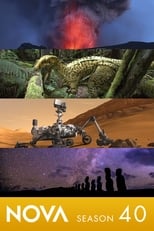
-
-
NOVA : Season 40
-
Air date: 10 Oct '12 - 20 episodesPBS' premier science series helps viewers of all ages explore the science behind the headlines. Along the way, NOVA demystifies science and technology, and highlights the people involved in scientific pursuits.
-
-
List of Episodes (20)
-
NOVA (1974)

-
1. Secrets of the Viking Sword
10 Oct '12The Vikings were among the fiercest warriors of all time. Yet only a select few carried the ultimate weapon of their era: the feared Ulfberht sword. Fashioned using a process that would remain unknown to the Vikings’ rivals for centuries, the Ulfberht was a revolutionary high-tech tool as well as a work of art. Considered one of the greatest swords ever made, it remains a fearsome weapon more than a millennium after it last saw battle. But how did Viking sword makers design and build the Ulfberh
-
NOVA (1974)

-
2. Forensics on Trial
17 Oct '12There is a startling gap between the glamorous television world of “CSI” and the gritty reality of the forensic crime lab. With few established scientific standards, no central oversight, and poor regulation of examiners, forensics in the U.S. is in a state of crisis. In "Forensics on Trial", NOVA investigates how modern forensics, including the analysis of fingerprints, bite marks, ballistics, hair, and tool marks, can send innocent men and women to prison—and sometimes even to death row. Shock
-
NOVA (1974)
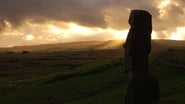
-
3. Mystery of Easter Island
07 Nov '12A remote, bleak speck of rock in the middle of the Pacific, Easter Island, or Rapa Nui, has mystified the world ever since the first Europeans arrived in 1722. How and why did the ancient islanders build and move nearly 900 giant statues or moai, weighing up to 86 tons? And how did they transform a presumed paradise into a treeless wasteland, bringing ruin upon their island and themselves? NOVA explores controversial recent claims that challenge decades of previous thinking about the islanders,
-
NOVA (1974)
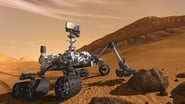
-
4. Ultimate Mars Challenge
14 Nov '12Why go back to Mars? Far from dead, Mars holds untold potential. Nearly half a century of Mars exploration has yielded tantalizing clues that Mars may once have harbored life—and may harbor it still. The extraordinary landing of a revolutionary rover named Curiosity—which successfully touched down inside the Gale Crater—means we have wheels down on the planet once again, in the form of the most sophisticated robot ever to rove the Mars surface. Will NASA's bold mission and this marvel of technol
-
NOVA (1974)

-
5. Inside the Megastorm
18 Nov '12Was Hurricane Sandy a freak combination of weather systems? Or are hurricanes increasing in intensity due to a warming climate? How did this perfect storm make search and rescue so dangerous? "Inside the Megastorm" takes viewers moment by moment through Hurricane Sandy, its impacts, and the future of storm protection. Through first person accounts from those who survived, and from experts and scientists, "Inside the Megastorm" gives scientific context to a new breed of storms.
-
NOVA (1974)
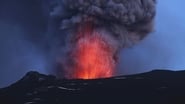
-
6. Doomsday Volcanoes
02 Jan '13In April, 2010 the eruption of Iceland's Eyjafjallajökull volcano turned much of Europe into an ash-strewn no-fly zone, stranding millions of travelers. But was Eyjafjallajökull just the start? Now, an even more threatening Icelandic volcano, Katla, has begun to swell and grumble. Two more giants, Hekla and Laki, could erupt without warning. Iceland is a ticking time bomb: When it blows, the consequences could be global. As CGI takes us inside these geological monsters, we meet atmospheric scien
-
NOVA (1974)

-
7. Decoding Neanderthals
09 Jan '13Examining evidence about Neanderthals that sheds light on the hominids, which died off some 30,000 years ago. Included: geneticist Svante Pääbo's 2010 reconstruction of the Neanderthal genome, which posits that modern humans and Neanderthals interbred at some point in the distant past.
-
NOVA (1974)

-
8. Rise of the Drones
23 Jan '13Drones. These unmanned flying robots–some as large as jumbo jets, others as small as birds–do things straight out of science fiction. Much of what it takes to get these robotic airplanes to fly, sense, and kill has remained secret. But now, with rare access to drone engineers and those who fly them for the U.S. military, NOVA reveals the amazing technologies that make drones so powerful as we see how a remotely-piloted drone strike looks and feels from inside the command center. From cameras tha
-
NOVA (1974)

-
9. Who Killed Lindbergh's Baby?
30 Jan '13In the aftermath of his 1927 solo transatlantic flight, Colonel Charles Augustus Lindbergh–the Lone Eagle–became the most famous human being on earth. And when he and his lovely wife Anne produced an adorable baby son, Charlie, an eager press quickly dubbed him Little Lindy or sometimes just the Eaglet. But on the evening of March 1, 1932 Lucky Lindy's luck ran out. Bold kidnappers snatched his baby from the family home near Hopewell, New Jersey, while everyone in the house was awake. Negotiatio
-
NOVA (1974)
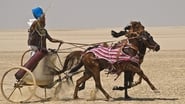
-
10. Building Pharaoh's Chariot
06 Feb '133,600-year-old reliefs in Egyptian tombs and temples depict pharaohs and warriors proudly riding into battle on horse-drawn chariots. Some historians claim that the chariot launched a technological and strategic revolution, and was the secret weapon behind Egypt's greatest era of conquest known as the New Kingdom. But was the Egyptian chariot really a revolutionary design? How decisive a role did it play in the bloody battles of the ancient world? In "Building Pharaoh's Chariot," a team of archa
-
NOVA (1974)

-
11. Earth From Space
13 Feb '13"Earth From Space" is a groundbreaking two-hour special that reveals a spectacular new space-based vision of our planet. Produced in extensive consultation with NASA scientists, NOVA takes data from earth-observing satellites and transforms it into dazzling visual sequences, each one exposing the intricate and surprising web of forces that sustains life on earth. Viewers witness how dust blown from the Sahara fertilizes the Amazon; how a vast submarine "waterfall" off Antarctica helps drive ocea
-
NOVA (1974)

-
12. Mind of a Rampage Killer
20 Feb '13What makes a person walk into a theater or a church or a classroom full of students and open fire? What combination of circumstances compels a human being to commit the most inhuman of crimes? Can science in any way help us understand these horrific events and provide any clues as to how to prevent them in the future? As the nation tries to understand the tragic events at Newtown, NOVA correspondent Miles O’Brien separates fact from fiction, investigating new theories that the most destructive r
-
NOVA (1974)

-
13. Meteor Strike
27 Mar '13On February 15, 2013, a 7,000-ton asteroid crashed into the Earth's atmosphere over Russia with the power of 30 Hiroshima bombs. Within days, NOVA crews joined impact scientists in Russia as they hunted for clues about the meteor's origin and makeup.
-
NOVA (1974)

-
14. Ancient Computer
03 Apr '13In 1900, Greek sponge divers discovered a 2,000 year-old shipwreck containing a geared bronze mechanism whose workings have puzzled scientists for decades. New hi-tech imaging has revealed that this clockwork machine was the world's first computer.
-
NOVA (1974)

-
15. Australia's First 4 Billion Years: Awakening
10 Apr '13Hidden in the red hills of western Australia are clues to the mysteries of when the Earth was born, how life first arose, and how it transformed the planet.
-
NOVA (1974)
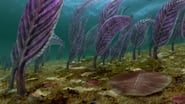
-
16. Australia's First 4 Billion Years: Life Explodes
17 Apr '13How did life storm the beaches and dominate planet Earth? Ancient Australian fossils offer clues in "Life Explodes." Half a billion years ago, Australia was still part of the super-continent Gondwana. The oceans were teeming with weird and wonderful animals, but the world above the waves remained an almost lifeless wasteland. All that was about to change, though. Host Richard Smith introduces Earth's forgotten pioneers: the scuttling arthropod armies that invaded the shores and the waves of gree
-
NOVA (1974)

-
17. Australia's First 4 Billion Years: Monsters
24 Apr '13"Monsters" begins Down Under at the dawn of the Age of Dinosaurs. Host Richard Smith comes face-to-face with the previously unknown reptilian rulers of prehistoric Australia. NOVA resurrects the giants that stalked the Great Southern Land and discovers that some of these animals were among the largest ever to have walked the Earth. Others were some of the most dangerous. In the dry desert heart, scientists unearth an ancient inland ocean full of sea monsters. Opal fossils of some of these beasts
-
NOVA (1974)
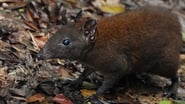
-
18. Australia's First 4 Billion Years: Strange Creatures
01 May '13In the wake of the catastrophic asteroid impact believed to have wiped out the dinosaurs, Australia was set adrift on a lonely voyage across southern seas. With host Richard Smith, NOVA travels the walkabout continent to uncover how it became the strange land it is today. In this final episode, "Strange Creatures," NOVA traces the last 65 million years, revealing the events that shaped the Australia we know today. Prehistoric jungles retreated, replaced by eucalypt forests, grasslands, and deser
-
NOVA (1974)

-
19. Manhunt - Boston Bombers
29 May '13NOVA follows the manhunt for the 2013 Boston Marathon bombers examining the role modern technology played in the case.
-
NOVA (1974)
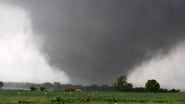
-
20. Oklahoma's Deadliest Tornadoes
29 May '13On May 20, 2013, a ferocious EF5 tornado over a mile wide tore through Moore, Oklahoma, inflicting 24 deaths and obliterating entire neighborhoods. It was the third time an exceptionally violent tornado had struck the city in 14 years. Yet predicting when and where these killer storms will hit still poses a huge challenge. Why was 2011—the worst ever recorded tornado season that left 158 dead in Joplin, Missouri—followed by the quietest ever year of activity prior to the Moore disaster? Can impr
-



























